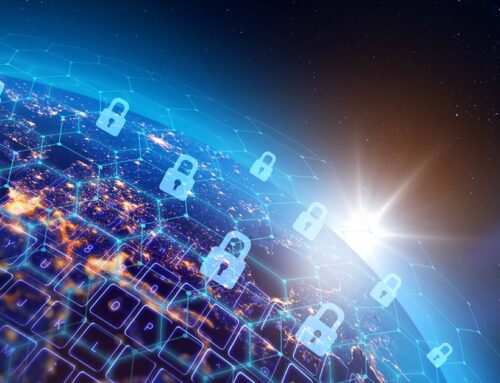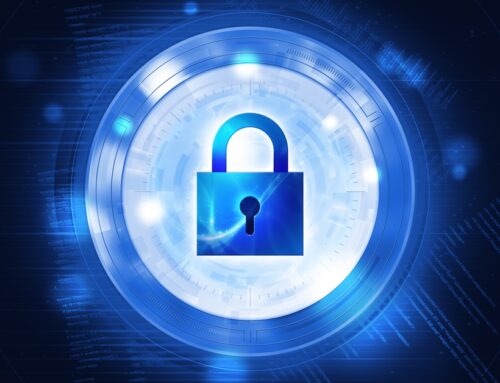Summer is just around the corner, and with many COVID-related travel restrictions lifted, many of us are planning to hit the road this year. While you might be planning to take a break from the office, you shouldn’t plan to take a break from cybersecurity safety precautions. More than ever, cybercriminals are targeting travelers, especially those who rely on public Wi-Fi and portable media.
“People carry a gold mine of data when traveling, including passports, payment information and detailed travel itineraries,” wrote Caleb Barlow, vice-president of X-Force Threat Intelligence at IBM Security, in a blog post. “When placed in the hands of a cybercriminal, all of this information can be patched together into a complete picture of the traveler’s life to inform identity theft, initiate spear phishing attacks, or be sold on the Dark Web.”
From 2019 to 2020, the most recent years available, U.S. identity-related losses has increased an estimated 42%, according to a report issued by Giact, an industry leader in payments- and identity-fraud prevention. What’s more, the report stated that 47% of U.S. consumers surveyed experienced identity theft, 37% experienced application fraud (the unauthorized use of a person’s identity to apply for an account), and 38% experienced account takeover (unauthorized access to a person’s existing account).
Because many travelers rely on public computers, public Wi-Fi, public charging stations, and the like, your risk of identify theft, application fraud, or account takeover increases.
How to Protect Yourself
If you are traveling to another country, before your board your fight, head on over to the U.S. Department of State’s Travel Advisories website, which offers information on cyber safety within the country you’re traveling to. The website includes information such as whether ATMs are safe to use, digital privacy concerns, known cybercrime activities, and common scams you should be aware of.
Regardless of where you travel, home or abroad, avoid ATMs that are in the open and in high-trafficked areas, as these are favorite skimming targets of cybercriminals. By installing a skimming device onto an ATM, these cybercriminals can secretly record your bank account data when you insert your ATM card in the machine. This then gives them full access to your accounts, which you will likely find fully drained of money the next time you attempt a withdrawal. If you must use an ATM, look for one inside a bank.
10 Summer Cyber Safety Tips
So, you’re determined to stay away from ATMs while you’re away from home, but are wondering what else can you do to protect yourself from cyber criminals and other bad actors. Here, then, is our list of 10 cyber safety tips.
- Limit your social media activity while traveling and especially refrain from posting photos of you and your family in Barbados. You’re already a target of cybercriminals; letting the rest of the world know you’re out of the country for two weeks only makes you a target for old-fashioned criminals, too – ou know, the kind who like to ransack houses.
- Turn off auto-connectivity functions, such as Wi-Fi and Bluetooth. With auto-connect turned on, your mobile phone could connect to a malicious device without your knowledge. Once infected, your phone could pass along any viruses, malware, or ransomware to your laptop the moment you connect it to your phone.
- Avoid public Wi-Fi connections. If you must use public Wi-Fi, then connect through a virtual private network. Absent a VPN, connect through your cell phone, as your mobile network connection is always more secure than public Wi-Fi.
- Always keep your devices physically with you.
- Location tools are great when using Google Maps or Waze, but having location services turned on can expose your location – even through photos. Turn off location services when they’re not in use.
- Never use a public computer. Okay, you can use public computers to read the news, but that’s about it. Don’t login to your bank, credit card, or social media accounts, as you never know what is lurking inside of that monitor.
- If you are taking a laptop with you, then before you head out the door, make sure all your data is backed up. If your laptop is lost or stolen – or suffers a catastrophic failure – you will have a small sense of relief knowing that your data in intact.
- Speaking of laptops, always make sure it is locked and secured. To that end, purchase a laptop lock and tether cable – and use it. You’ll be glad you did.
- Do not charge your phone at public charging stations. These charging stations are often infected with malware that is instantly passed to your mobile device the moment you connect the charging cable. Within seconds, a cybercriminal can download your passwords, bank account information, contact list, and more. If public charging is your only option, then use a data blocker, which is a physical cybersecurity device that blocks all data connections to a USB port while allowing the port to be used for charging.
- Don’t plug any “found” portable media – such as USB thumb drives – into your laptop, regardless of how tempting it might be. This flash drive just might be loaded with malware or ransomware and purposely left for someone just like you to find it. Don’t let curiosity kill the cat.
Have fun this summer, and above all, stay cyber safe.










